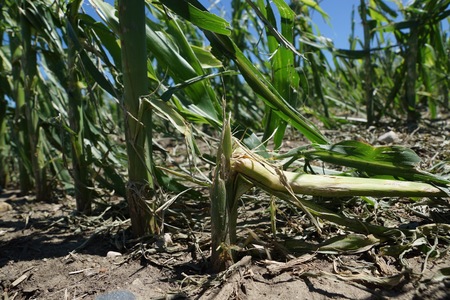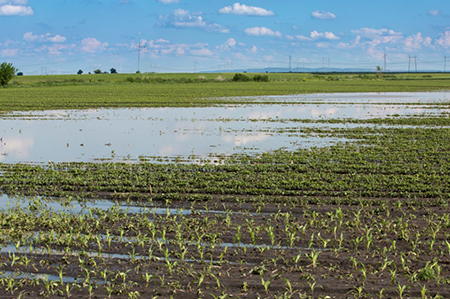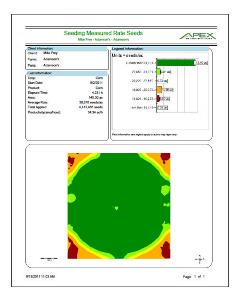Mega Menu
Mega menu is possible in BS5 but we will need to create a custom template layout for the navigation widget. The following is a hard-coded example.

Font Awesome 6
FA6+ icons will work on all widgets.
The FMH Icon box will need a new version created because the styling is broken in Bootstrap 5 templates (this has nothing to do with FA).
FMH Icon Widget
Icons can now be used in Content blocks by pasting the HTML tags from www.fontawesome.com into the HTML editor.
Here are some new icons from Font Awesome 6
face-awesome
envelopes
wheat-awn
Bootstrap Components
Code snippits from http://getbootstrap.com pasted into Content Blocks.
h1. Bootstrap heading
h2. Bootstrap heading
h3. Bootstrap heading
h4. Bootstrap heading
h5. Bootstrap heading
h6. Bootstrap heading
Nav Tabs
Nav Pills
Accordion
.accordion-body, though the transition does limit overflow.
.accordion-body, though the transition does limit overflow.
.accordion-body, though the transition does limit overflow.
Tables
| # | First | Last | Handle |
|---|---|---|---|
| 1 | Mark | Otto | @mdo |
| 2 | Jacob | Thornton | @fat |
| 3 | Larry the Bird | ||
Alerts
Image Carousel
Modals
Sitefinity Widgets
Default, out of the box, Bootstrap 5 templates available for widgets.
The navigation template used above is called Horizontal.
Navigation Widget - Tabs Template
Navigation Widget - Pills Template
Breadcrumb


List Widget - Expandable List Template
Precision Claims FAQs
List Widget - Simple List Template
Crop Claims Reminders
-
How To Report MPCI Claims
-
MPCI Claim Reporting Deadlines
-
Appraisals
-
Production Records by Unit
-
Production Delivered to a Commercial Elevator
-
Production From Precision Farming Technology Systems
-
Production Weighed and Farm Stored
-
Authorization for Load Records, Storage Structure Marking, or Combine Monitor Records
-
Fed Production
-
Quality Adjustment
-
What is a Simplified Claim?
-
What can insureds do to expedite the claim process?
List Widget - Anchor List Template
Quality Control Review FAQ
- What can an Insured do to prepare for a review?
- What can Agents do to prepare for a review?
- How does the review process begin?
Quality Control Review FAQ
What can an Insured do to prepare for a review?
Third party documentation (i.e. summary/settlement sheets from the elevator) is required when applicable and available. Insureds are expected to have available hard copy records that will 1) support the total production raised for the crop/county/year being reviewed and 2) that can demonstrate how production was kept separate between various units, practices and types (if applicable).
Insureds will also want make themselves available to meet with the quality control reviewer as the reviews will need to be completed before the claims can be processed.
What can Agents do to prepare for a review?
How does the review process begin?
Documents List - Documents List Template
Documents List - Documents List Template
| Title | Type | Size | |
| 602 KB | DownloadFMHQ Release 2 Guide | ||
| 405 KB | DownloadWFRP Checklist for Agents 2026 | ||
| 504 KB | DownloadWFRP Policy Provisions 2026 | ||
| 3231 KB | DownloadWFRP Handbook 2026 | ||
| 203 KB | DownloadECO_MCO_SCO_Coverage Comparison Flyer |
News Widget - News List Template
News list template is the only template available by default.
USDA Using Flexibility to Assist Farmers, Ranchers in Flooded Areas
 WASHINGTON, D.C. August 15, 2019 – The U.S. Department of Agriculture’s (USDA) Risk Management Agency (RMA) today announced it will defer accrual of interest for all agricultural producers’ spring 2019 crop year insurance premiums
to help the wide swath of farmers and ranchers affected by extreme weather in 2019. Specifically, USDA will defer the accrual of interest on spring 2019 crop year insurance premiums to the earlier of the applicable termination date or for two months,
until November 30, for all policies with a premium billing date of August 15, 2019. For any premium that is not paid by one of those new deadlines, interest will accrue consistent with the terms of the policy.
WASHINGTON, D.C. August 15, 2019 – The U.S. Department of Agriculture’s (USDA) Risk Management Agency (RMA) today announced it will defer accrual of interest for all agricultural producers’ spring 2019 crop year insurance premiums
to help the wide swath of farmers and ranchers affected by extreme weather in 2019. Specifically, USDA will defer the accrual of interest on spring 2019 crop year insurance premiums to the earlier of the applicable termination date or for two months,
until November 30, for all policies with a premium billing date of August 15, 2019. For any premium that is not paid by one of those new deadlines, interest will accrue consistent with the terms of the policy.
“USDA recognizes that farmers and ranchers have been severely affected by the extreme weather challenges this year,” said U.S. Secretary of Agriculture Sonny Perdue. “I often brag about the resiliency of farmers but after a lifetime in the business, I have to say that this year is one for the record books. To help ease the burden on these folks, we are continuing to extend flexibility for producers with today’s announcement.”
RMA Administrator Martin Barbre added, “This administrative flexibility is not unprecedented but is a move RMA takes seriously and only under special circumstances like we’re experiencing today. Growers typically have some crop harvested and cash flow to make their billing date, but with so many late planted crops, this year will be an anomaly.”
America’s farmers and ranchers have been especially challenged throughout the 2019 crop year, struggling through severe flooding and excessive moisture conditions across the grain belt and in many other rural communities, with some areas also dealing with extreme heat and drought. Such weather conditions are expected to take a serious toll on acres planted, crop yields, and crop quality as harvest begins. One of the largest operating costs for producers is crop insurance premiums paid to their Approved Insurance Provider. Many spring crop insurance premiums are due to be paid before October 1.
Without the interest deferral, policies with an August 15 premium billing date would have interest attach starting October 1 if premiums were not paid by September 30. Now, under the change, policies that do not have the premium paid by November 30 will have interest attach on December 1, calculated from the date of the premium billing notice.
USDA announced Monday that U.S. farmers filed prevented planting claims on more than 19 million acres during the 2019 crop year. Earlier this summer, USDA announced a series of flexibilities to reduce stress on producers affected by weather, including: providing more time for cover crop haying and grazing by moving the start date from November 1 to September 1, 2019; allowing producers who filed prevented planting claims then planted a cover crop with a potential for harvest to receive a $15 per acre Market Facilitation Program payment; holding signups in select states for producers to receive assistance in planting cover crops; and extending the crop reporting deadline in select states. USDA also will provide producers with prevented planting acreage additional assistance, which will be announced in the coming weeks, through the Additional Supplemental Appropriations for Disaster Relief Act of 2019.
Blog Posts Widget - Blog Posts Lists Template
-
Reporting Acreage with FMH Precision Solutions
Many policyholders already collect precision ag data during planting. Put that data to work to report acreage for crop insurance with FMH Precision Solutions.Full story -
Prepping Your Customers for Planting with Precision
Help your farmers use the precision data they're already collecting to simplify planting and reporting this spring.Full story -
Q&A with an FMH Precision Tech Specialist
Learn how our expert staff supports agents getting started with Precision SolutionsFull story -
Traditional vs. Precision Claims: What Are the Differences?
Oct 16, 2023, 14:01 by Eric RicheLearn how Precision Solutions can lead to simplified claims and easier APH reviews for your customers.Full story -
See How Precision Solutions Saves Premium and Improves APH
See the difference with examples from our recent FieldView™ Partner Connect webinar.Full story



